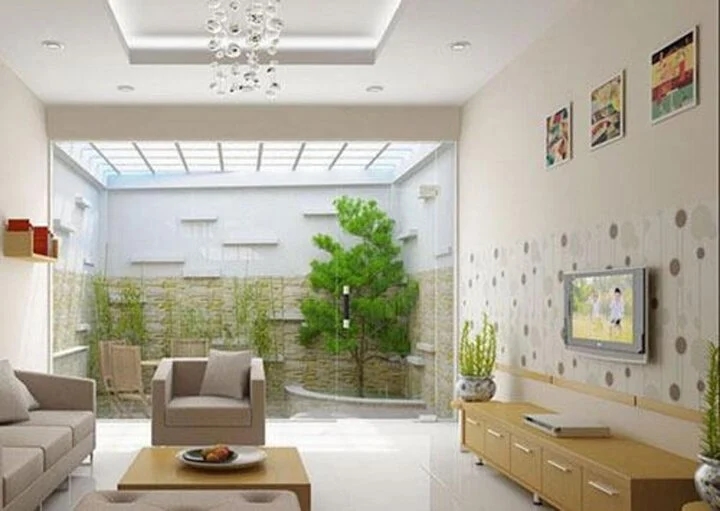Sun Control
Invest in curtains and blinds. This is a simple yet effective way to block heat from sunlight entering your home. Opt for light-colored or thick curtains to better block the heat.
Additionally, consider using window film. For large windows, window film can help reduce the amount of heat transmitted through the glass while protecting your interior from UV rays.
Planting trees is also a great suggestion. Not only do they beautify your space, but they also help cool the surrounding area through photosynthesis.
Ventilation Adjustment
In the early morning or evening when outdoor temperatures are lower, open your windows to create a convective airflow, making your indoor space cooler.
Using fans will improve air circulation, creating a refreshing feeling. Combining fans with open windows can enhance cooling. Also, adjust the rotation of your ceiling fan to blow cool air downwards.
Insulation for Your Home
Insulate your roof by using insulating materials such as foam or fiberglass to prevent heat from the roof from reaching the lower floors.
Insulate walls by painting them in light colors to absorb less heat. Additionally, you can use insulating materials to improve the home’s heat retention.
When building or renovating, prioritize choosing materials with good insulating properties, such as unfired bricks and natural wood.

Illustration: Rever.
Cooling Devices
Air conditioning: This is the most effective cooling solution, but it also consumes a lot of electricity. Use air conditioning in combination with fans to save energy.
Evaporative coolers: These machines use water to cool the air and are suitable for small spaces with low humidity.
Mist fans: Mist fans produce a cool breeze by evaporating water, helping to lower the temperature and increase humidity.
Other Tips
Use natural materials: Materials such as wood, rattan, and bamboo have excellent temperature regulation properties, making your living space cooler.
Reduce the use of heat-emitting devices: Turn off unnecessary electrical appliances when not in use, especially heat-emitting devices such as stoves and ovens.
Cook in the morning or evening: Cook during the cooler times of the day to reduce indoor temperatures.
Change bed linens frequently: Use cotton or linen bed linens to create a cool and comfortable sleeping environment.
For the best results, combine multiple methods mentioned above. Additionally, regular maintenance of cooling devices is essential.
According to VTC News

































